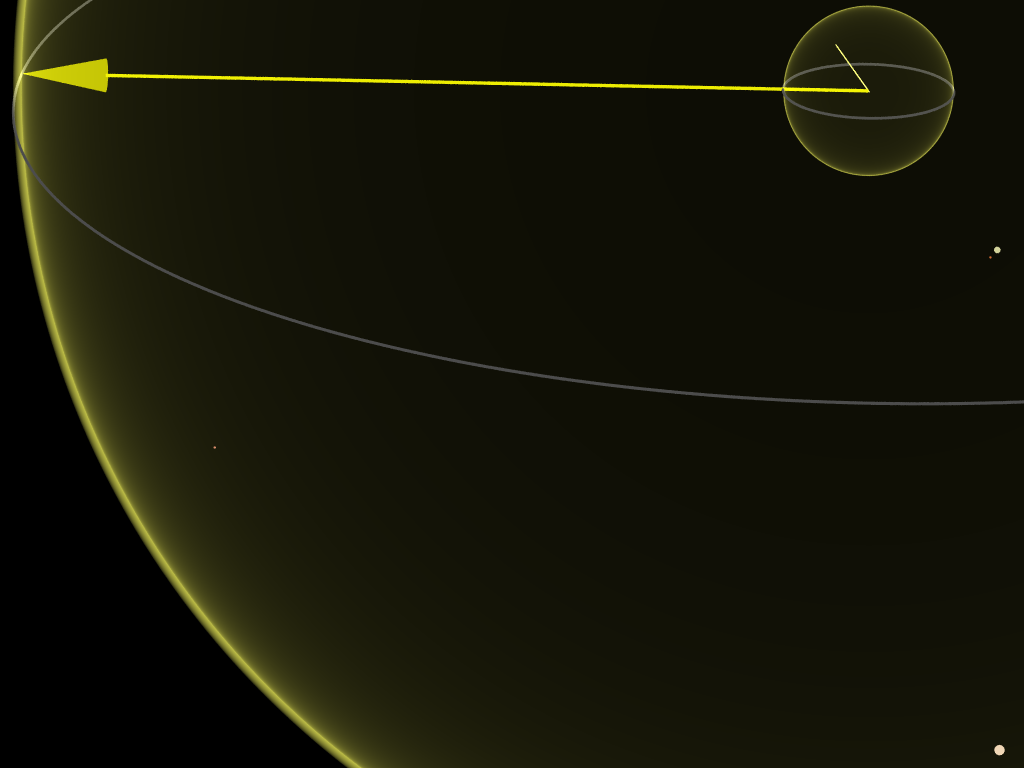Facts for Kids
A light-year is a unit of length used to express astronomical distances, equal to about 9.46 trillion kilometers, representing how far light travels in one year.
Overview
Historical Context
The Speed Of Light
Significance In Astronomy
Definition Of A Light Year
How Light Years Are Measured
Applications In Space Exploration
Examples Of Distances In Light Years
Common Misconceptions About Light Years
Comparison With Other Units Of Distance

Inside this Article
Space Exploration
Friedrich Bessel
Proxima Centauri
Andromeda Galaxy
Astronomy
Calendar
Universe
School
Second
Globe
Did you know?
🌌 A light-year is how far light travels in one year.
💡 Light moves at an incredible speed of about 299,792 kilometers every second!
🌟 One light-year equals about 9.46 trillion kilometers.
🚀 The nearest star, Proxima Centauri, is about 4.24 light-years away from Earth.
🌠 The Milky Way galaxy is roughly 100,000 light-years across.
🌍 Understanding light-years helps scientists map out the universe.
😮 A light-year is a measurement of distance, not time!
🏃♂️ Distances in space are much larger than distances we measure every day.
🌌 Light from the Sun takes about 8 minutes to reach us on Earth.
🌠 Light-years help astronomers study galaxies that are billions of light-years away!
Introduction
Well, scientists use a special way to measure those huge distances called a light-year! A light-year is not a year like in our calendar. Instead, it measures how far light travels in one year. Light moves super fast—about 299,792 kilometers (186,282 miles) every second! 🚀
When we talk about a light-year, we're describing distances in space that are way too big for regular measurements like kilometers or miles. So, let’s dive into the fun world of light-years!
Historical Context
In the 19th century, astronomers started measuring distances in space using various methods. The term "light-year" was first used in 1838 by German astronomer Friedrich Bessel while studying the star 61 Cygni. He wanted a way to express how far we are from other stars, and the light-year became a perfect solution! 🚀
Over time, many scientists have used light-years to study our universe, making it an important part of astronomy!
The Speed Of Light
Imagine traveling from Earth to the Moon in just 1.28 seconds—that’s how fast light travels! It goes at about 299,792 kilometers (186,282 miles) per second. To understand this speed better, think about how long it takes light from the Sun to reach Earth—it’s about 8 minutes and 20 seconds. 🌞
This means when we see sunlight, it's actually from the past! Light's speedy journey is why light-years help us measure the vast distances in the universe!
Significance In Astronomy
By knowing distances in light-years, scientists can study how stars, planets, and galaxies are arranged. For example, the Milky Way galaxy is about 100,000 light-years across! 🌌
This means it would take light 100,000 years to travel from one side of the galaxy to the other. Using light-years, astronomers can also determine how far away from Earth other galaxies are, expanding our knowledge of space!
Definition Of A Light-year
Since light is incredibly fast, it can cover about 9.46 trillion kilometers (or about 5.88 trillion miles) in just one year. That’s one followed by 12 zeros! 😮
This measurement helps scientists understand how far apart stars and galaxies are in our universe. Just to help you visualize, light from the Sun takes about 8 minutes to reach Earth, while light from the nearest star, Proxima Centauri, takes over 4 years to get here! 💫
How Light-years Are Measured
Light travels 299,792 kilometers per second, which is about 7.5 times around the Earth in just one second! To figure out a light-year, scientists multiply that speed by the number of seconds in a year—about 31.5 million seconds! When they do the math, they find that light travels almost 9.46 trillion kilometers in a year. 🌍
This incredible speed is why light-years are used when talking about distances in space!
Applications In Space Exploration
When scientists plan to send missions to other planets, like Mars, they need to know distances. For example, Mars can be about 0.5 light-years away from us when measured in space! 🚀
By understanding distances in light-years, astronomers can also find new planets outside our solar system, called exoplanets, and study them. This helps us learn if they might support life! 🪐
Light-years lead the way in exploring the mysteries of our universe!
Examples Of Distances In Light-years
Our closest star, Proxima Centauri, is about 4.24 light-years away. This means light from that star takes over four years to reach us! The Andromeda Galaxy, which is our nearest spiral galaxy, is approximately 2.537 million light-years away! 🌌
Some galaxies, like GN-z11, are so far that they are estimated to be about 13.4 billion light-years away. That’s really far!
Common Misconceptions About Light-years
A light-year is a measure of distance, not time. Also, light-years don’t tell us how old a star or galaxy is. 🌌
For example, even if a star is one light-year away, it doesn't mean it’s one year old. Finally, light-years only describe distance, so they cannot be used to measure things closer to us, like a book or your school!
Comparison With Other Units Of Distance
♂️ For example, a long road trip might be around 100 kilometers (62 miles). But in space, distances are way bigger! A light-year, which measures about 9.46 trillion kilometers or 5.88 trillion miles, is much more useful for stars and galaxies. 🌌
If we can think of one light-year like 1,000,000 Earth trips around the globe, that helps us understand just how massive space really is!

